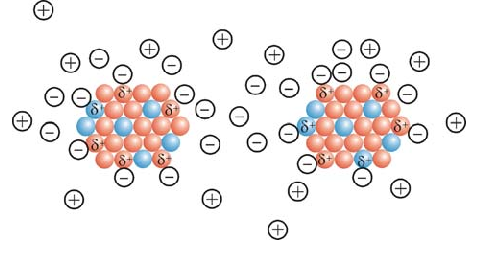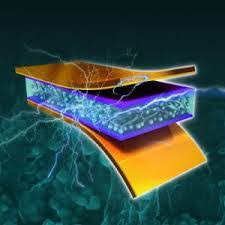Electrostatic interaction of graphene nanoparticles (based on nano-micro-electronics PHD ) (educational-research doctorate)
Researcher and author: PhD student: Afshin Rashid
Note: Graphene nanoparticles are a good alternative to carbon nanotubes for the production of electronic nanostructures due to their high electrical properties and the abundance of their main constituents, graphite in nature.
On the other hand, due to the unique properties of graphene, including nanoelectric , nanoelectrochemical and high specific surface properties , this material can be used in many applications such as sensors, nano-transistors, energy storage sources and a variety of nano-devices. Microelectronics has increased dramatically. Graphene has significant nanoelectronic properties such as; high Young modulus; high fracture strength , excellent nanoelectric conductivity, fast mobility of (nano-loads) . There are simple electrostatic interactions between graphene nanoparticles in a solution, graphene nanoparticles such as semiconductors, nanoparticles.
Graphene is fundamentally different from other two-dimensional or three-dimensional graphite materials in terms of block structure and other geometric shapes of carbon, such as zero-dimensional spherical spherical. Graphene from a single layer with one-dimensional carbon nanotubes from a hexagonal ring that can be represented as an aberration molecule of a flat aromatic foot structure (conjugate). The flat structure of graphene has made it an excellent tool for the application of electrostatic transfer and interaction in nanoelectric devices.
The application of graphene nanoparticles in nanomaterials interferes with electromagnetic interference and nanostructural discharge in nanoparticles to rectenna nanoparticles, and nanoparticles. The efficiency of graphene particles in measuring the electromagnetic nanoparticle interference and enhanced by modified graphene nanofibers is measured. One of the most important new structures in carbon nanotubes is graphene. Graphene is a plate of carbon atoms. Graphene is the newest member of the large carbon family. The term graphene was used to describe a single layer of nano of graphite. This nano material has high transparency due to its low thickness. Also, its portability has attracted a lot of attention. It is very difficult to control the conditions for separating a single layer of graphene, usually a material Called graphene, it contains sets of several layers of graphene , each containing a different number of pages.





